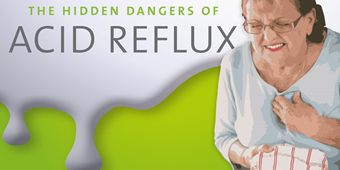Gluten-Free Diet: Is It Right for You?

Answer a few questions and we'll provide you with a list of primary care providers that best fit your needs.
Sugar-free. GMO-free. And now gluten-free. It seems that more and more food choices are about what to avoid. For some, this careful sleuthing for safe, healthy foods is a medical necessity. For the rest of us, we should be more concerned about what’s in our foods that can actually help us.
Gluten-Free Basics
In the case of gluten-free, very few of us need to completely avoid this naturally occurring ingredient. Gluten is a protein that’s found mainly in grains such as wheat, barley and rye, which means it’s also found in foods containing these grains. When someone follows a title=gluten-free diet;healthinfo=What Is a Gluten-Free Diet?, they eliminate all sources of gluten from their meals.
Foods like rice, corn, quinoa, some oats, fruits, vegetables and some alcoholic beverages are gluten-free. But to completely avoid gluten, you’d need to steer clear of foods made with wheat, rye or barley. This means most breads, pizza, cereals, pastas, cakes, cookies and even some yogurts.
Many processed foods also contain hidden gluten. Some of the more common culprits are sauces, dressings, canned soups, nutrition bars and veggie burgers. Even some medicines, probiotics, vitamins and supplements can contain gluten.
Escaping gluten is no easy feat.
Who Needs a Gluten-Free Diet?
The recent surge in gluten-free foods has created some confusion about who truly needs a gluten-free diet, says Paul Jennewine, MD, Middletown Medical Group.
Only people with title=celiac disease;healthinfo=Celiac Disease need to completely eliminate gluten from their diet. That’s about 1 percent of the population. Celiac disease is a condition in which gluten damages the small intestine and its ability to absorb nutrients. A gluten-free diet is the only treatment. If left untreated, your small intestine can become permanently damaged, leading to serious health problems.
“There are a lot of people in the general public who are gluten-intolerant or have gluten sensitivity and experience uncomfortable GI symptoms when they eat foods containing gluten,” he explains. “But they don’t have true celiac disease where their small intestine is being damaged.” So they don’t need to, and probably shouldn’t, avoid gluten entirely.
If you’ve never experienced digestion problems from gluten, have never been diagnosed with celiac disease or have never been instructed by your health care provider to avoid gluten, then you don’t need to complicate meal planning by eliminating it.
Escaping gluten is no easy feat.
“Gluten-Free” Not a Cure-All

You might assume a gluten-free diet is always a healthy diet. After all, it’s in the media frequently so it must be the way to go, right? Not so, says the American Heart Association (AHA), which does not recommend a gluten-free diet for the general public.
Gluten-free foods can be loaded with ingredients that should be limited in a heart-healthy diet, such as sugar, salt, saturated fat, trans fat and cholesterol. Instead, the AHA recommends more heart-healthy foods, such as fruits, vegetables and proteins, which are naturally gluten-free.
The gluten-free craze prompts some to arbitrarily decrease gluten or eliminate it from their diet, thinking it will make them lose weight or feel more energetic, for example. Unless there’s a medical reason directing otherwise, going gluten-free is not always a good choice.
Totally eliminating gluten from your diet could rob you of essential vitamins and minerals. Like with any other eating plan, you should focus on choosing the most nutritious foods whenever possible.
Answer a few questions and we'll provide you with a list of primary care providers that best fit your needs.
Source: American Diabetes Association; American Heart Association; Paul Jennewine, MD, Middletown





